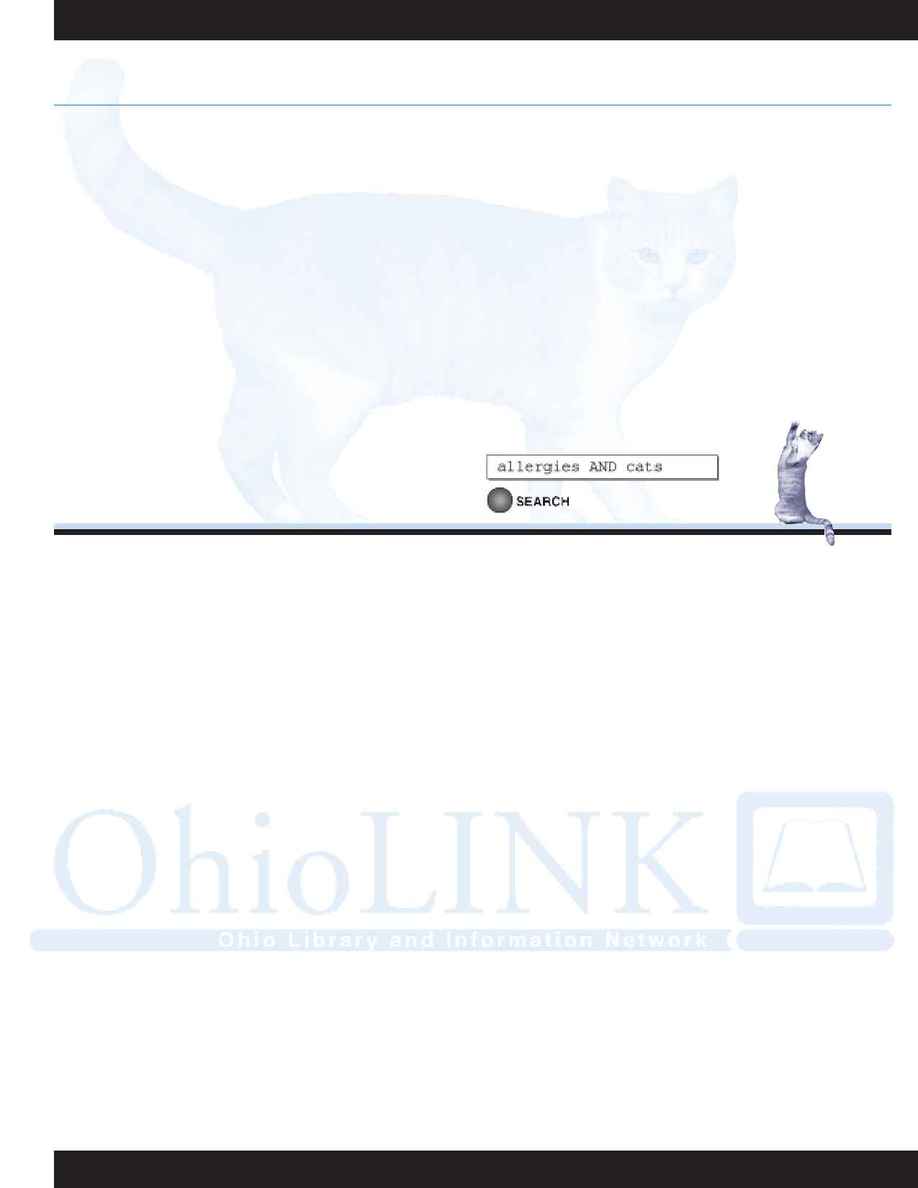
www.biosis.org
3
BIOSIS Evolutions
Vol. 8 Issue 4 2001
A
SK OUR
T
RAINERS
S
OME
D
AND
-
ER
S
EARCH
E
XPERTS
Over the years, users have asked the BIOSIS trainers hundreds of
questions on basic and advanced search topics alike. Our trainers
rely on their thorough knowledge of BIOSIS databases to satisfy
users and impart the value of BIOSIS indexing to them.
One example that our trainers routinely use to explain the power
of context-sensitive indexing is cat allergies. It might not seem
significant, but the point this search illustrates certainly is.
Suppose that you were looking to find information on the allergies
that cats suffer from, but not the allergies of humans to cats. If you
simply used the standard Boolean free text search "allergies and
cats," you would find all allergies that involve cats in any way, i.e.
human allergies to cats, cats' allergies to humans...etc. Even adding
the search term "not human," does not accomplish the desired effect;
irrelevant citations are still mixed in with the useful ones. There is
simply no Boolean way to express the direction of this relationship.
However, the specificity of BIOSIS indexing fields lets a user find
this information. Selecting "Veterinary Science" in the Major Concept
field removes all of the excess entries related to human allergies.
Since no human pathologies would be listed under "Veterinary
Science," we can be sure that only allergies that afflict cats will be
discussed. This example neatly illustrates how a broader term, correctly
used, can find more targeted information than a text search.
Do You Have an Intriguing BIOSIS Search in Mind?
Have you run across any searches like the one above? If so, let us
know. Or, if any searches have you furrowing your brow, then
maybe now's the time to tackle them again. Try to work through
them with some of the search aids detailed in this issue, such as
the QRCs available on our Web site.
Send in any noteworthy searches to BIOSIS and our expert searchers
will look them over. Who knows, if it's interesting enough, maybe
you'll even see it printed in the next Evolutions.
s
G
REATER THAN THE SUM OF ITS PARTS
THE SUCCESS OF
O
HIO
LINK
continued from page 1
began in the late 1980's is remarkable, considering that the Internet
was not in place at the time. When OhioLINK was in the planning
stage, its builders knew that some form of electronic information
exchange would be involved, even though the Web did not yet exist.
Online services were in place, but these were generally run by
librarians handling requests. An important aspect of OhioLINK's plan
was to have students and staff access the service from their own
desktop computers. Whether it was for a request for a physical
book, an electronic journal, or access to a database like BA, the
philosophy was to give the end-users access to as much information
and control as possible and let them decide what they needed.
Sanville acknowledged that the Web has certainly made this goal
attainable, but pointed out that OhioLINK is still a work in progress.
"The information needs of people continue to evolve, so we can't
possibly define an end state," said Sanville. "We certainly don't
have an end state in mind. We only know the types of things
that we want to continue to try to do better. [Toward that end,]
technology is an enabling device."
It also brings with it more expectations. When the Web first began,
people did not use it regularly, whereas today, it is almost taken for
granted. "Before the Web," said Sanville, "you had one set of
expectations; now, with the Web, you have another. For example,
for a lot of our students, if it's not on the Web, it doesn't exist. It
could be down the stacks at the library, but if it's not on the Web,
it doesn't exist. That's just a simple way of trying to illustrate
how we have to respond to peoples' expectations."
The Web will play a large role in the future of OhioLINK, though,
Sanville said. Right now, most of the material available on the
system is text-based. Plans are underway to incorporate more
video and audio materials. The constantly increasing bandwidth
and improved delivery methods of the Web have enabled these
new features, and OhioLINK plans to continue using this
technology to its advantage.
Sanville is happy to note the success of OhioLINK in both a
practical and philosophical way. On the practical side, the
resource sharing system for interlibrary loans and electronic
journals has been an unqualified success. But all of this was only
made possible, Sanville points out, because OhioLINK was able to
change the way its member institutions approached these tasks.
"We work in a community rather than as individual institutions.
Without that change of mindset, you can't make a lot of these
things happen."
"When we look at hurdles and horizons, we look at them
collectively, and we're much stronger and able to overcome those
than individual libraries are, which is the whole point in the first
place. We've had enough practical successes that people believe
the philosophy, and are willing to approach current problems,
current hurdles, and current horizons on the assumption that this
philosophy will work again."
s
